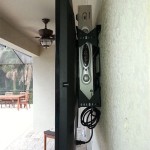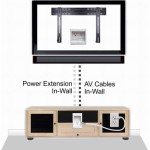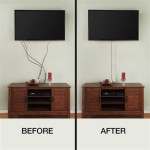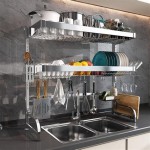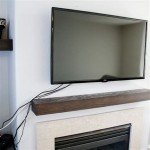RV Wall Mount Air Conditioner: A Comprehensive Guide
Recreational Vehicles (RVs) offer the freedom of travel and the comfort of home. Maintaining a comfortable interior climate is paramount, particularly in varying weather conditions. Among the cooling solutions available for RVs, the wall-mount air conditioner presents a viable alternative to traditional rooftop units. This article provides a detailed overview of RV wall mount air conditioners, covering their advantages, disadvantages, installation, maintenance, and key considerations for potential buyers.
RV wall mount air conditioners, as the name suggests, are designed to be installed through an exterior wall of the RV. They differ from rooftop units in several ways, most notably in their placement and overall design. This difference in design influences aspects such as weight distribution, noise levels, installation complexity, and ultimately, the cooling performance within the RV.
Advantages of RV Wall Mount Air Conditioners
The decision to opt for a wall mount air conditioner over a rooftop unit often hinges on specific needs and constraints. Several key advantages make wall mount units a compelling choice for some RV owners.
One primary advantage is the lower profile. Unlike rooftop units, which add significant height to the RV, wall mount units protrude less, minimizing the risk of clearance issues when driving under low bridges or through areas with overhanging branches. This reduced height can be especially beneficial for larger RVs that already have limited clearance.
Another significant benefit is potentially lower noise levels. While this can vary depending on the specific model, many wall mount air conditioners are designed to operate more quietly than their rooftop counterparts. This is often attributed to the unit's placement, which is typically closer to the ground and further away from the living areas within the RV. The sound of the compressor and fan is therefore less directly transmitted into the occupied space.
Furthermore, wall mount air conditioners can sometimes offer easier maintenance access. The components are typically more accessible than those housed in a rooftop unit, which can require climbing onto the roof for servicing. This accessibility can simplify routine maintenance tasks such as filter replacement and coil cleaning.
Finally, in certain RV models without pre-existing rooftop air conditioner mounting points, installing a wall mount unit can be a simpler and more cost-effective solution than retrofitting the roof to accommodate a rooftop unit. This is particularly relevant for older RVs or those not originally designed with air conditioning in mind.
Disadvantages of RV Wall Mount Air Conditioners
While offering several advantages, RV wall mount air conditioners also present certain drawbacks that need careful consideration. These disadvantages may make them unsuitable for some RV owners.
A major disadvantage is the requirement for a suitable wall opening. Installation necessitates cutting a hole in the exterior wall of the RV, which can be a daunting prospect and potentially compromise the structural integrity of the wall if not performed correctly. This process also introduces the risk of water leaks if the unit is not properly sealed and installed. The wall must have sufficient structural support to bear the weight of the air conditioner, and the placement must be carefully considered to avoid interfering with existing wiring or plumbing.
Another potential drawback is the loss of window or storage space. Wall mount air conditioners typically occupy a significant portion of the wall where they are installed, potentially blocking a window or reducing available storage space inside the RV. This can be a significant concern for RV owners who prioritize natural light or have limited storage capacity.
Moreover, the cooling capacity of wall mount air conditioners may be limited compared to some rooftop units. While sufficient for smaller RVs or specific zones within a larger RV, a single wall mount unit might struggle to effectively cool a large RV in extremely hot weather. This is particularly true in climates with high humidity, where the latent heat load adds to the overall cooling demand.
Finally, aesthetics can be a factor. Some RV owners find the appearance of a wall mount air conditioner to be less visually appealing than a sleek rooftop unit. The unit's protrusion from the exterior wall can disrupt the RV's overall design and detract from its aesthetic appeal.
Installation and Maintenance Considerations
The installation and maintenance of an RV wall mount air conditioner are crucial for ensuring its proper operation, longevity, and safety. Incorrect installation can lead to performance issues, water leaks, and even structural damage to the RV. Similarly, neglecting regular maintenance can reduce the unit's efficiency, shorten its lifespan, and create potential health hazards.
Installation must be performed by a qualified technician or a mechanically proficient individual with experience in RV repairs. The process typically involves carefully cutting an opening in the exterior wall according to the manufacturer's specifications, ensuring that the opening is properly sealed and weatherproofed, and securely mounting the air conditioner in place. Electrical connections must be made correctly to avoid overloading the RV's electrical system and creating a fire hazard. Furthermore, proper drainage must be provided to allow condensation to escape without damaging the RV's structure. It is imperative to consult the manufacturer's instructions and local building codes throughout the installation process.
Regular maintenance is essential for keeping the air conditioner running efficiently and preventing problems. This includes cleaning the air filters regularly, typically every few weeks or monthly, depending on usage and environmental conditions. Dirty air filters restrict airflow, reduce cooling efficiency, and can lead to overheating. The evaporator and condenser coils should also be cleaned periodically to remove dirt and debris that can impede heat transfer. This can be done with a soft brush or a fin comb. The exterior of the unit should be inspected regularly for signs of damage or wear, and any cracks or leaks should be promptly repaired. It is also advisable to have the unit professionally serviced annually to ensure that all components are functioning properly and to identify any potential issues before they become major problems. In winter, if the RV is stored in a climate with freezing temperatures, the air conditioner should be properly winterized according to the manufacturer's instructions to prevent damage from freezing water.
Selecting the appropriate RV wall mount air conditioner involves careful consideration of several factors. The size and layout of the RV are key determinants of the required cooling capacity. BTU (British Thermal Units) ratings indicate the amount of heat the air conditioner can remove per hour; a higher BTU rating is necessary for larger RVs or those used in hot climates. It is important to choose a unit with sufficient capacity to effectively cool the space without overworking the compressor, which can shorten its lifespan. The unit's energy efficiency rating, often expressed as EER (Energy Efficiency Ratio), is also an important consideration. A higher EER indicates greater energy efficiency, which can translate to lower operating costs. The unit's noise level, measured in decibels (dB), should also be taken into account, particularly for those seeking a quiet sleeping environment. Additional features, such as remote control operation, programmable timers, and multiple fan speeds, can enhance convenience and comfort. Finally, the unit's dimensions and weight must be compatible with the available wall space and the RV's structural capacity.
When selecting a Wall Mount Air Conditioner for an RV, it is crucial to prioritize safety. The unit should be certified by a recognized testing laboratory, such as UL (Underwriters Laboratories) or ETL (Electrical Testing Laboratories), to ensure that it meets established safety standards. All electrical connections must be made in accordance with local electrical codes and the manufacturer's instructions. A qualified electrician should be consulted for any electrical work beyond basic plug-in connections. The unit should be properly grounded to prevent electrical shock. It is essential to install and use the air conditioner in a well-ventilated area to prevent the buildup of carbon monoxide, a colorless and odorless gas that can be fatal. Carbon monoxide detectors should be installed and maintained in the RV to provide early warning of any potential hazards. Finally, the air conditioner should be inspected regularly for signs of damage or wear, and any defective parts should be promptly replaced.
Proper operation of the RV wall mount air conditioner is essential for maximizing its efficiency and lifespan. Avoid operating the unit continuously at its maximum cooling setting, as this can strain the compressor and lead to premature failure. Use the thermostat to maintain a comfortable temperature and adjust the fan speed to suit the cooling needs. Keep windows and doors closed while the air conditioner is running to prevent outside air from entering and increasing the cooling load. Use curtains or blinds to block sunlight from entering the RV, as this can also reduce the cooling demand. Avoid placing heat-generating appliances, such as stoves or ovens, near the air conditioner, as this can interfere with its operation. Clean the air filters regularly to maintain proper airflow and prevent overheating. If the air conditioner is not being used for an extended period, turn it off and unplug it from the power source to conserve energy. Follow the manufacturer's instructions carefully regarding proper operation and maintenance to ensure optimal performance and longevity.
Troubleshooting common issues with an RV wall mount air conditioner can help prevent minor problems from escalating into major repairs. If the air conditioner is not cooling properly, check the air filters to ensure they are clean. If the filters are clean, check the thermostat to ensure it is set to the correct temperature. Also check to ensure that the exterior vents are not obstructed. If the air conditioner is making unusual noises, check the fan blades for any obstructions or damage. If the air conditioner is leaking water, check the drain line to ensure it is not clogged. If the air conditioner is not turning on, check the circuit breaker to ensure it has not tripped. These basic troubleshooting steps can often resolve simple issues without the need for professional assistance. If the problem persists, consult a qualified technician for further diagnosis and repair.
Key Considerations for Potential Buyers
Selecting the best RV wall mount air conditioner requires careful evaluation of individual needs and circumstances. Before making a purchase, potential buyers should consider the size of their RV, the climate in which they will be using the air conditioner, their budget, and their personal preferences regarding features and aesthetics.
The size of the RV is a primary factor in determining the required cooling capacity. Larger RVs require air conditioners with higher BTU ratings to effectively cool the space. The climate in which the RV will be used also plays a significant role. RV owners who frequently travel to hot climates will need air conditioners with higher BTU ratings and greater energy efficiency. Budget is another important consideration. RV wall mount air conditioners range in price from several hundred to several thousand dollars, depending on their features and performance. It is important to establish a budget and select an air conditioner that offers the best value for the money.
Personal preferences should also be taken into account. Some individuals prioritize quiet operation, while others are more concerned with energy efficiency or aesthetic appeal. Consider the features that are most important and select an air conditioner that meets those requirements. Doing thorough research and comparing different models can help potential buyers make an informed decision and choose the best RV wall mount air conditioner for their needs.

1500w Wall Mounted Rittal Pentair Cabinet Rv Air Conditioner Outdoor Manufacturing Plant Made In China Com

Travel Trailer Wall Mounted Air Conditioner Bad Idea

Cjc 12v Wall Mounted Air Conditioner Evaporator Kit Universal Car Caravan Truck Bus Motorhome Tractor

Coleman Mach 48253c966 13 500 Btu 120v Air Conditioner Textured White

Wall Mounted 12v Air Conditioner Danhard 00826be 95

Rv Mini Split Air Conditioners Efficient Cooling For Your Camping

Coleman Mach 48253b876 13 500 Btu 120v Air Conditioner Textured White

Rv Mini Split Air Conditioners Efficient Cooling For Your Camping

1500w Wall Mounted Rittal Pentair Cabinet Rv Air Conditioner Outdoor Manufacturing Plant Made In China Com

Coolpro2800c 12v Rv Air Conditioner Kingclima

